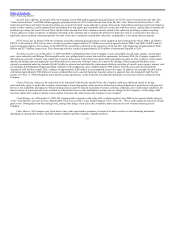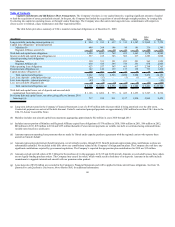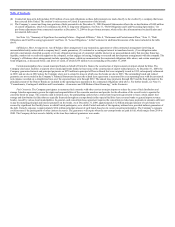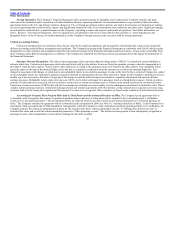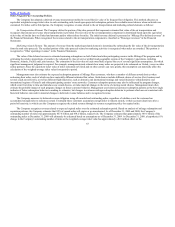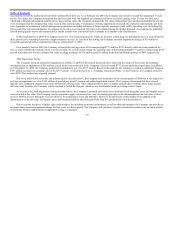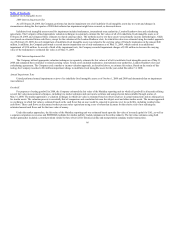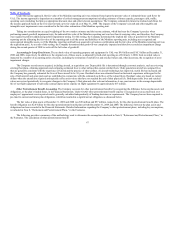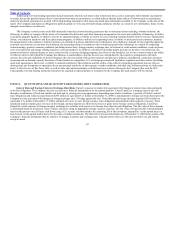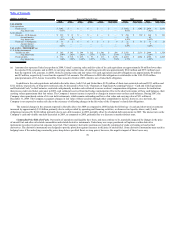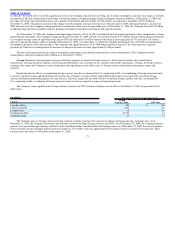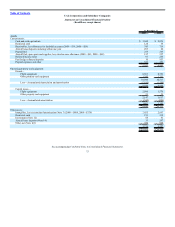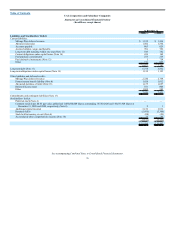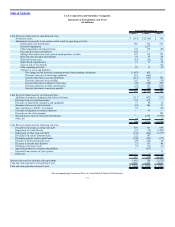United Airlines 2009 Annual Report Download - page 71
Download and view the complete annual report
Please find page 71 of the 2009 United Airlines annual report below. You can navigate through the pages in the report by either clicking on the pages listed below, or by using the keyword search tool below to find specific information within the annual report.
Table of Contents
Under the income approach, the fair value of the Mainline reporting unit was estimated based upon the present value of estimated future cash flows for
UAL. The income approach is dependent on a number of critical management assumptions including estimates of future capacity, passenger yield, traffic,
operating costs (including fuel prices), appropriate discount rates and other relevant assumptions. The Company estimated its future fuel-related cash flows for
the income approach based on the five-year forward curve for crude oil as of May 31, 2008. The impacts of the Company’s aircraft and other tangible and
intangible asset impairments were considered in the fair value estimation of the Mainline reporting unit.
Taking into consideration an equal weighting of the two market estimates and the income estimate, which has been the Company’s practice when
performing annual goodwill impairment tests, the indicated fair value of the Mainline reporting unit was less than its carrying value, and therefore, the Company
was required to perform additional goodwill impairment testing. For this testing, the Company determined the implied fair value of goodwill of the Mainline
reporting unit by allocating the fair value of the reporting unit to all the assets and liabilities of the Mainline reporting unit, including any recognized and
unrecognized intangible assets, as if the Mainline reporting unit had been acquired in a business combination and the fair value of the Mainline reporting unit was
the acquisition price. As a result of this testing, the Company determined that goodwill was completely impaired and therefore recorded an impairment charge
during the second quarter of 2008 to write-off the full value of goodwill.
Accounting for Long-Lived Assets. The net book value of operating property and equipment for UAL was $9.8 billion and $10.3 billion at December 31,
2009 and 2008, respectively. In addition to the original cost of these assets, as adjusted by fresh-start reporting as of February 1, 2006, their recorded value is
impacted by a number of accounting policy elections, including the estimation of useful lives and residual values and, when necessary, the recognition of asset
impairment charges.
The Company records assets acquired, including aircraft, at acquisition cost. Depreciable life is determined through economic analysis, such as reviewing
existing fleet plans, obtaining appraisals and comparing estimated lives to other airlines that operate similar fleets. Older generation aircraft are assigned lives
that are generally consistent with the experience of United and the practice of other airlines. As aircraft technology has improved, useful life has increased and
the Company has generally estimated the lives of those aircraft to be 30 years. Residual values are estimated based on historical experience with regard to the
sale of both aircraft and spare parts and are established in conjunction with the estimated useful lives of the related fleets. Residual values are based on current
dollars when the aircraft are acquired and typically reflect asset values that have not reached the end of their physical life. Both depreciable lives and residual
values are revised periodically to recognize changes in the Company’s fleet plan and other relevant information. A one year increase in the average depreciable
life of our flight equipment would reduce annual depreciation expense on flight equipment by approximately $17 million.
Other Postretirement Benefit Accounting. The Company accounts for other postretirement benefits by recognizing the difference between plan assets and
obligations, or the plan’s funded status, in its Financial Statements. Under GAAP, other postretirement benefit expense is recognized on an accrual basis over
employees’ approximate service periods and is generally calculated independently of funding decisions or requirements. The Company has not been required to
pre-fund its current and future plan obligations, which has resulted in a significant net obligation, as discussed below.
The fair value of plan assets at December 31, 2009 and 2008 was $58 million and $57 million, respectively, for the other postretirement benefit plans. The
benefit obligation was $2.0 billion for the other postretirement benefit plans at both December 31, 2009 and 2008. The difference between the plan assets and
obligations has been recorded in the Financial Statements. Detailed information regarding the Company’s other postretirement plans, including key assumptions,
is included in Note 8, “Retirement and Postretirement Plans,” in the Footnotes.
The following provides a summary of the methodology used to determine the assumptions disclosed in Note 8, “Retirement and Postretirement Plans,” in
the Footnotes. The calculation of other postretirement benefit
67


